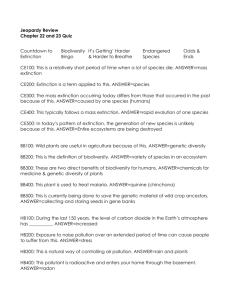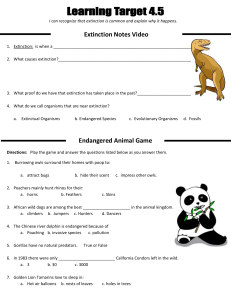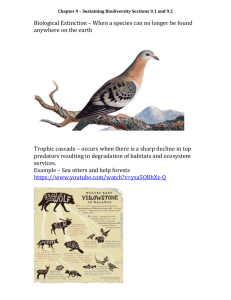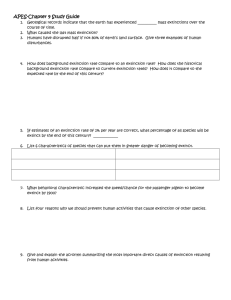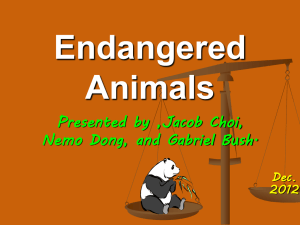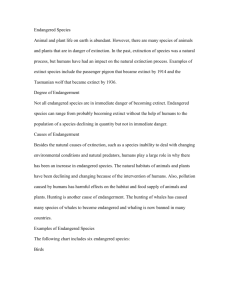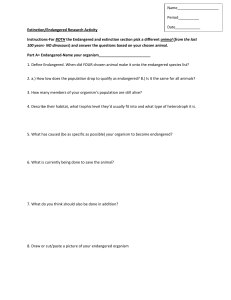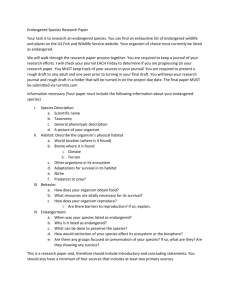Causes of Extinction
advertisement
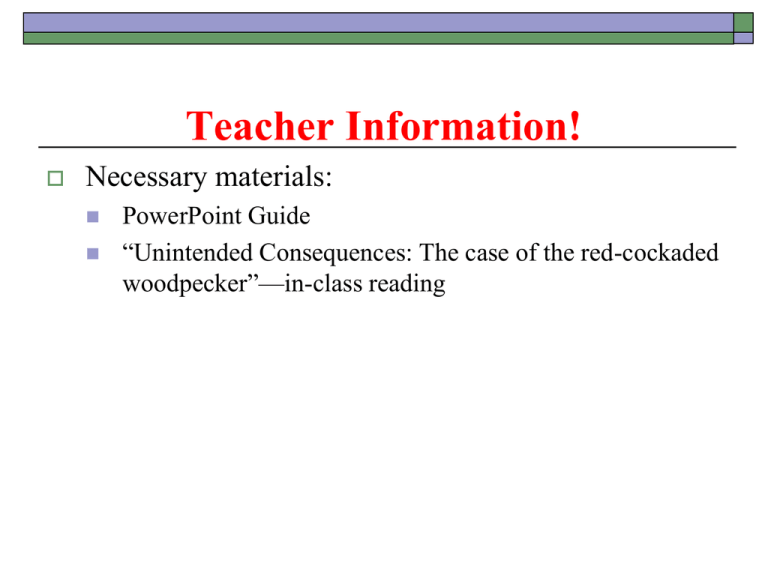
Teacher Information! Necessary materials: PowerPoint Guide “Unintended Consequences: The case of the red-cockaded woodpecker”—in-class reading Causes of Extinction Fish and Wildlife Resources Students will be able to… Discuss factors contributing to extinction/endangerment Discuss the Endangered Species Act Why do some species become extinct or endangered and others do not? Extinction is natural 99% of all species that have ever existed are extinct. Species spend about 1 to 10 million years on earth. Why do some species become extinct or endangered and others do not? Some species are more vulnerable and less adaptive Specialists Require very specific foods Endemic species Occur in only one place on earth The extinction rate has greatly increased in the last 10,000 years. WHY? Golden Toad—1989 Tasmanian Tiger—1936 Pyrenean Ibex—2000 Passenger Pigeon—1914 PEOPLE are the root cause of the increased rate of extinction HIPPO Habitat alteration: desertification, deforestation urbanization, wetland destruction agriculture, global climate change Invasive species Utilize resources Outcompete native species PEOPLE are the root cause of the increased rate of extinction HIPPO Pollution—probably less of a threat than other factors Population growth (human) Exacerbates other factors Overexploitation Hunting Resource consumption Endangered Species Act (1966) Led to the creation of the “Endangered Species List” Positive effects Recovery & removal (delisted) from the Endangered Species List American alligator, peregrine falcon, bald eagle, brown pelican, gray wolf, gray whale Endangered Species Act (1966) What are the negative effects of the ESA? Read : “Unintended Consequences: The Case of the Red-Cockaded Woodpecker” Why would land users not want endangered species in an area? “Shoot, shovel, and shut up” principle Review Discuss factors contributing to extinction/endangerment Summarize the Endangered Species Act
